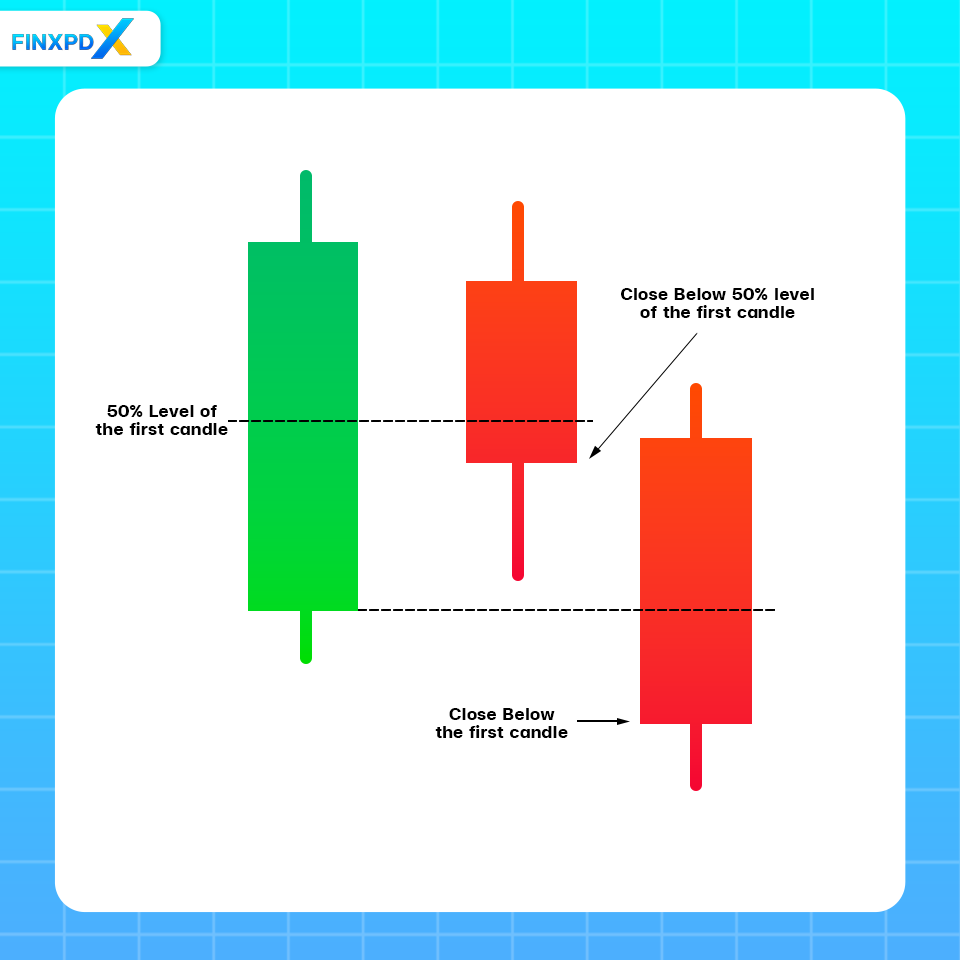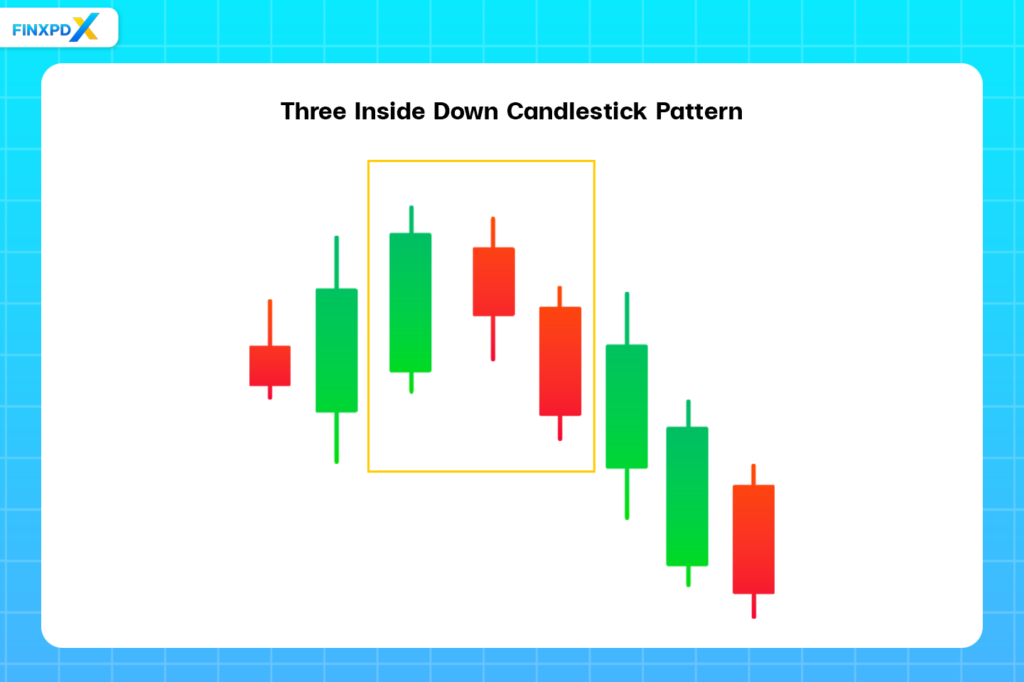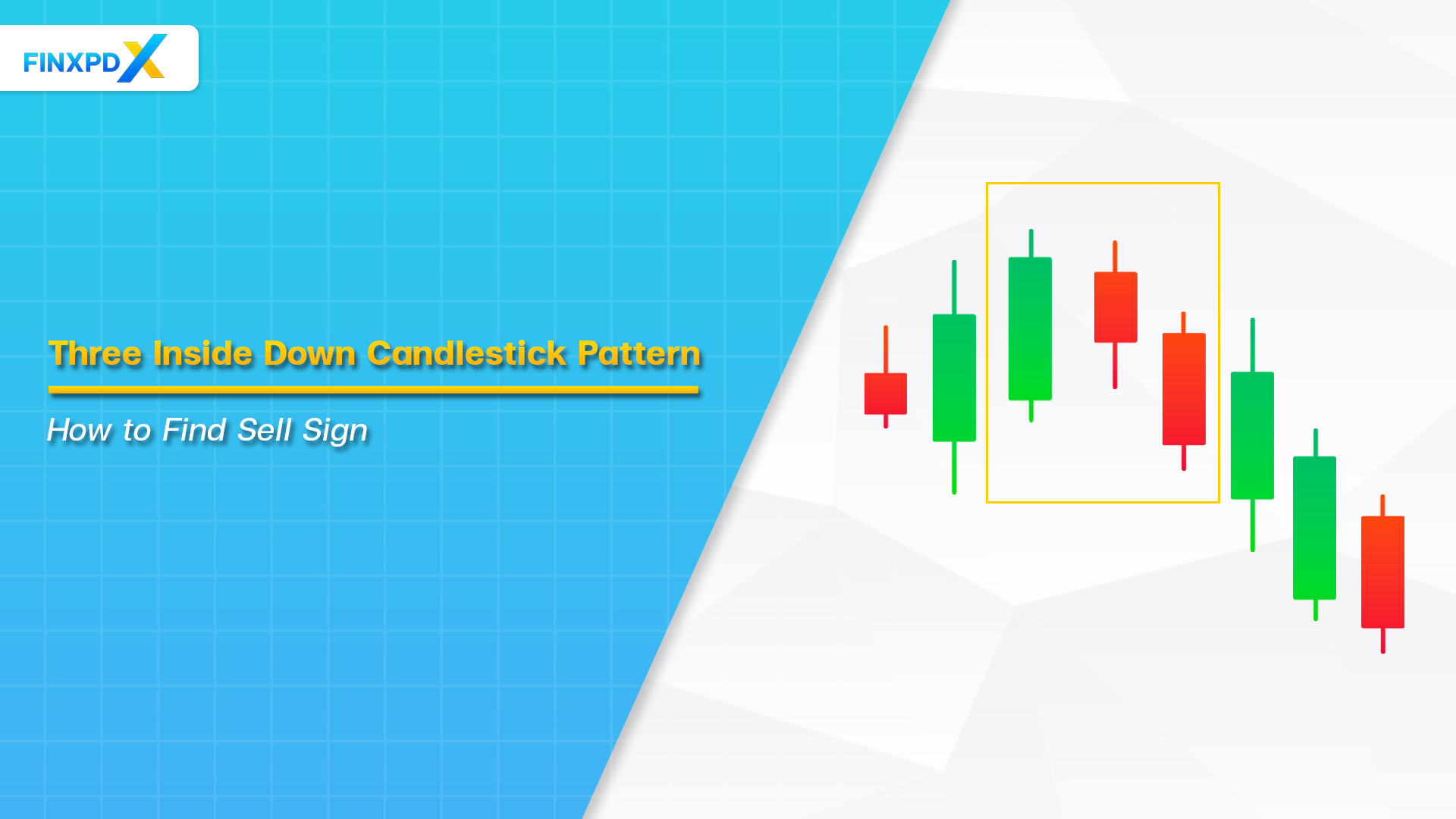Candlestick patterns are invaluable for traders, offering visual insights into market sentiment and potential price movements. The three inside down candlestick pattern is a bearish reversal indicator. It helps traders predict potential downturns in asset prices. This pattern is particularly useful for those involved in forex chart analysis and other markets where price action is closely monitored.
In this article, we’ll explore the structure, signals, and practical applications of this powerful market sentiment indicator.
What Is Three Inside Down Candlestick Pattern?
The three inside down candlestick patterns are bearish reversal patterns used in technical analysis to identify potential market downturns. Its name originates from the pattern’s distinctive formation and the sequence of events it represents.
The term “three inside” refers to the fact that the second and third candles are contained within the range of the first candle, highlighting the shift in momentum. The word “down” signifies the anticipated downward price movement following the pattern’s completion.
Key Takeaways
- The three inside down candlestick pattern is a bearish reversal indicator formed by three specific candlesticks.
- The three inside down candlestick pattern consists of a large bullish candle, followed by a smaller bearish candle within the first, and a final bearish candle closing below the initial candle’s open.
- The three inside down candlestick pattern typically appears after an uptrend, indicating a possible reversal in market sentiment.
- The three inside down candlestick pattern suggests a shift from bullish to bearish sentiment, providing a signal for traders to consider selling or shorting their positions.
- The three inside down pattern signals a bearish reversal. However, the three inside up pattern indicates a bullish reversal.
The Structure of Three Inside Down Candlestick
The three inside down candlestick pattern includes three distinct candlesticks that form a bearish reversal signal.

First Candle: Bullish Candle
The pattern begins with a long bullish candle with a significant body. It sets the stage for the subsequent candles.
Second Candle: Bearish Candle Inside the First Candle
The second candle is a smaller and bearish one. This candle opens within the first candle’s body and closes within its range. It’s a signal to stay cautious and closely watch the market.
Third Candle: Bearish Candle Confirming Reversal
The final candle in the pattern is another bearish candle. It must open and close lower than the second candle, with its close below the opening of the first candle. This third candle is there to confirm the bearish reversal.
When Does the Three Inside Down Candlestick Pattern Happen?

The three inside down candlestick pattern typically appears at the end of an uptrend, signaling a potential shift from bullish to bearish sentiment. This pattern is common when the market starts to lose its upward momentum. It can also occur in overbought market conditions, where prices have climbed too high, and a correction is likely.
Additionally, the pattern may form near key resistance levels, where the price struggles to move higher and faces increased selling pressure. A change in market sentiment, driven by news events or economic factors, can also trigger this pattern. In these situations, the initial bullish trend weakens, and sellers begin to take control, making the three inside down pattern a useful indicator for traders to anticipate a possible downturn.
The Signal From Three Inside Down Candlestick Pattern
The three inside down candlestick pattern signals a bearish reversal, indicating that the bullish trend is losing strength. It consists of a large bullish candle, a smaller bearish candle, and a final bearish candle that closes below the first candle’s open. This pattern suggests that sellers are gaining control.
After this pattern forms, traders should consider exiting long positions or entering short positions, as it often predicts a price decline. To confirm the signal, traders should use other technical indicators and set appropriate stop-loss orders to manage risk. Recognizing this pattern allows traders to adjust their strategies and take advantage of potential market downturns.
⚠️ Tip: Traders should stick to their trading plan and maintain discipline to avoid emotional decision-making.
Three Inside Down Candlestick vs Three Inside Up Candlestick

The three inside down and three inside up candlestick patterns are similar in structure but indicate opposite market directions. The three inside down pattern signals a bearish reversal, forming after an uptrend and indicating a potential decline in price.
In contrast, the three inside up pattern suggest a bullish reversal and appear after a downtrend. While both patterns are reliable indicators of potential trend reversals, they cater to opposite market scenarios, helping traders identify opportunities to buy or sell based on the prevailing market sentiment.
In fact, there are a total of 35 different candlestick patterns on our website. If you are interested in learning about other indicators to increase the accuracy of the three inside down candlestick patterns, we recommend exploring patterns such as the Engulfing pattern, Doji, and Morning Star. These additional patterns can help you confirm signals and make more informed trading decisions.
Click the button below to download the PDF
Conclusion
The three inside down candlestick pattern is valuable for traders, offering a clear signal of a potential bearish reversal. Recognizing this pattern can help traders anticipate a shift in market sentiment, enabling them to adjust their strategies accordingly. With its distinct structure of a large bullish candle followed by two smaller bearish candles, this pattern indicates a loss of bullish momentum and a possible downturn.
By understanding the differences between the three inside down and three inside up patterns, traders can effectively navigate both bearish and bullish market scenarios. While the three inside down pattern suggest an opportunity to sell or short, the three inside up pattern signal a potential buying opportunity. As with any candlestick trading strategy, it’s crucial to confirm these patterns with other technical indicators and manage risk through proper position sizing and stop-loss orders. Mastering these patterns can enhance traders’ ability to make informed decisions in various market conditions.
FAQs
A three inside down candlestick pattern is a bearish reversal signal that occurs after an uptrend. It consists of a large bullish candle, followed by a smaller bearish candle, and a final bearish candle that closes below the first candle’s open.
The three inside down candlestick pattern is a bearish pattern. It suggests that the upward momentum is losing strength and that a downward price movement may follow.
In trading, a three inside down pattern implies that the current bullish trend may be reversing, and a bearish trend could be starting.
The three inside down candlestick pattern is generally considered a reliable bearish reversal signal. However, like all technical indicators, it is not foolproof. Traders should use it in conjunction with other indicators and analyses to confirm the trend reversal and manage risk effectively.
When a three inside down pattern forms, traders should consider exiting long positions and possibly entering short positions. It’s crucial to confirm the signal with additional analysis and set stop-loss orders to protect against unexpected price movements.
Related Articles:
- Forex Indicators: Guide for New Traders
- Leverage Trading: Best Tool to Maximizing Profit
- Margin Trading: The Way to Amplifies Your Buying
- Spot Market: Real-Time Trading Simplified
Read more: Forex



